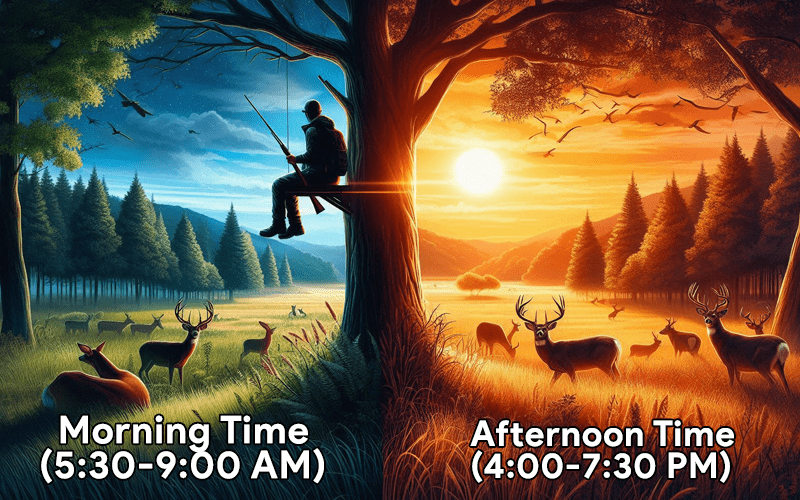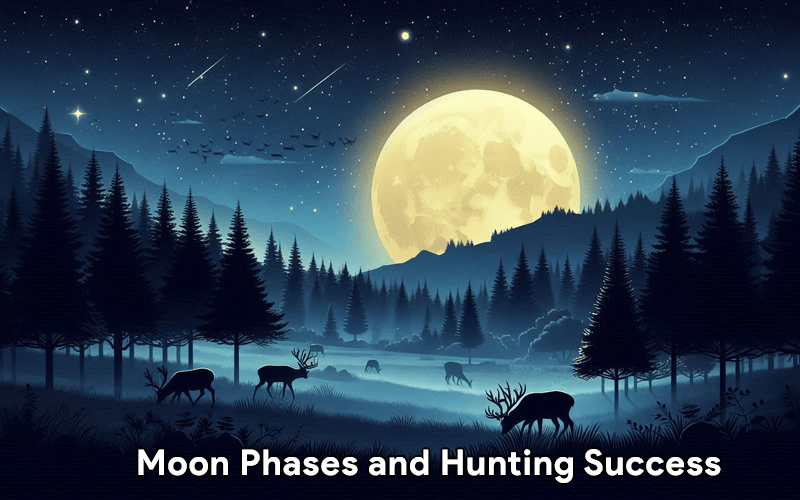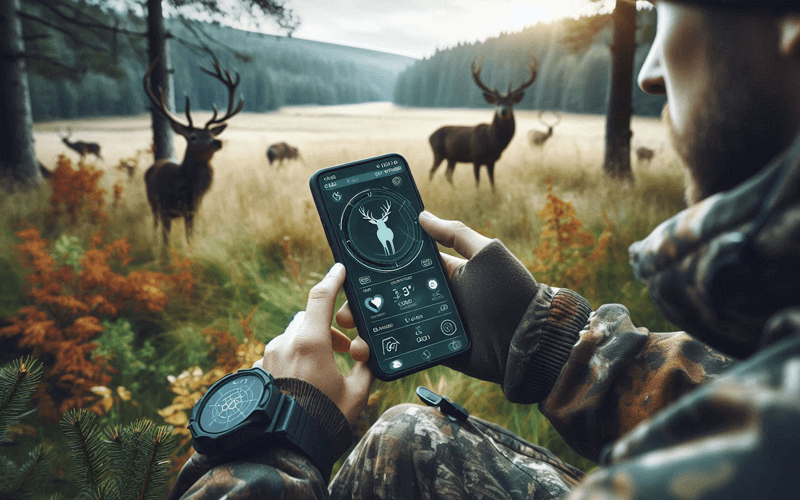Did you know that nearly 70% of successful deer hunts occur during the early morning and late afternoon? Timing truly is everything when it comes to hunting deer. Successful hunters understand that grasping deer movement patterns, seasonal behaviors, and the right time of day can make a significant difference.

Whether you’re a seasoned hunter or just getting started, this guide will help you optimize your hunting trips by focusing on the best times to hunt deer in 2024.
1. Understanding Deer Movement Patterns
Deer are creatures of habit, and their movement patterns are largely influenced by weather, food availability, and the time of day. They are most active during dawn and dusk, as these times provide the best cover from predators. Learning when and where they move is crucial for a successful hunt.
2. Best Times of Day to Hunt Deer

The most effective times to hunt deer are during early morning and late afternoon. These periods align with the deer’s natural feeding habits.
1. Best Morning Time: 5:30 AM to 9:00 AM
Deer typically leave their bedding areas early in the morning to head toward feeding zones. The cool temperatures and low light conditions during this time make them feel safe. Being in your stand by 5:30 AM and hunting through to 9:00 AM maximizes your chances of catching them on the move.
2. Best Afternoon Time: 4:00 PM to 7:30 PM
In the late afternoon, deer return to their feeding areas as the sun begins to set. From 4:00 PM until about 7:30 PM, deer activity spikes again as they prepare for nightfall. This period is often referred to as the “magic hour.”
3. Seasonal Deer Behavior: Which Season is Best?
Each season brings different deer behavior patterns. Knowing how to adapt your strategy based on the season can increase your chances of success.
- Pre-Rut (Late September – Early October):
Deer, especially bucks, start becoming more active as they search for food and prepare for the rut. This is a great time to hunt near food sources. - Peak Rut (Late October – Mid-November):
The rut is the most exciting time for deer hunters. Bucks are actively seeking does and become less cautious. During this period, deer can be spotted at any time of the day, but early morning and late afternoon still offer the best opportunities. - Post-Rut and Late Season (December – January):
After the rut, deer become more cautious, but cold weather can push them to move more during daylight hours as they seek food.
4. Moon Phases and Hunting Success

Deer movement can be influenced by the lunar cycle. The full moon often keeps deer moving longer into the night, making early morning hunts more effective during this phase. Conversely, during the new moon, deer tend to move more during the day, so hunting during midday can also be successful.
5. Weather Conditions: How to Use Them to Your Advantage
Weather conditions play a significant role in deer behavior. For example:
- Cold fronts increase deer movement as they prepare for the drop in temperature.
- Rainy days often push deer to move just before or after the rain stops.
- Windy conditions can affect their sense of smell, making them less cautious.
By planning your hunt around these weather conditions, you can increase your chances of success.
6. Technology to Track Best Hunting Times

Using technology such as apps like HuntStand or OnX Hunt, hunters can track weather patterns, moon phases, and predict peak deer movement. These tools can be extremely useful for optimizing your hunting strategy and ensuring you’re in the right place at the right time.
7. Final Tips: What Experienced Hunters Know
Experienced hunters always have a plan. They scout the area in advance, position themselves near food or water sources, and remain patient. Here are some practical tips:
- Scout early: Understanding the terrain and deer habits can give you an edge.
- Stay quiet: Movement and noise can alert deer, so keep your movements slow and silent.
- Be adaptable: Conditions can change quickly; be ready to adjust your strategy.
By combining your knowledge of deer movement, seasonal behavior, and the right timing, you can increase your odds of bringing home a trophy.
Conclusion
By understanding the best times to hunt deer—whether it’s early morning, late afternoon, or during peak rut—you can drastically improve your hunting success. Use this guide, along with weather data and technology, to plan your trips effectively. Share your own hunting tips and experiences in the comments below, and let’s make 2024 a year of memorable hunts! Happy hunting!
Leave a Reply